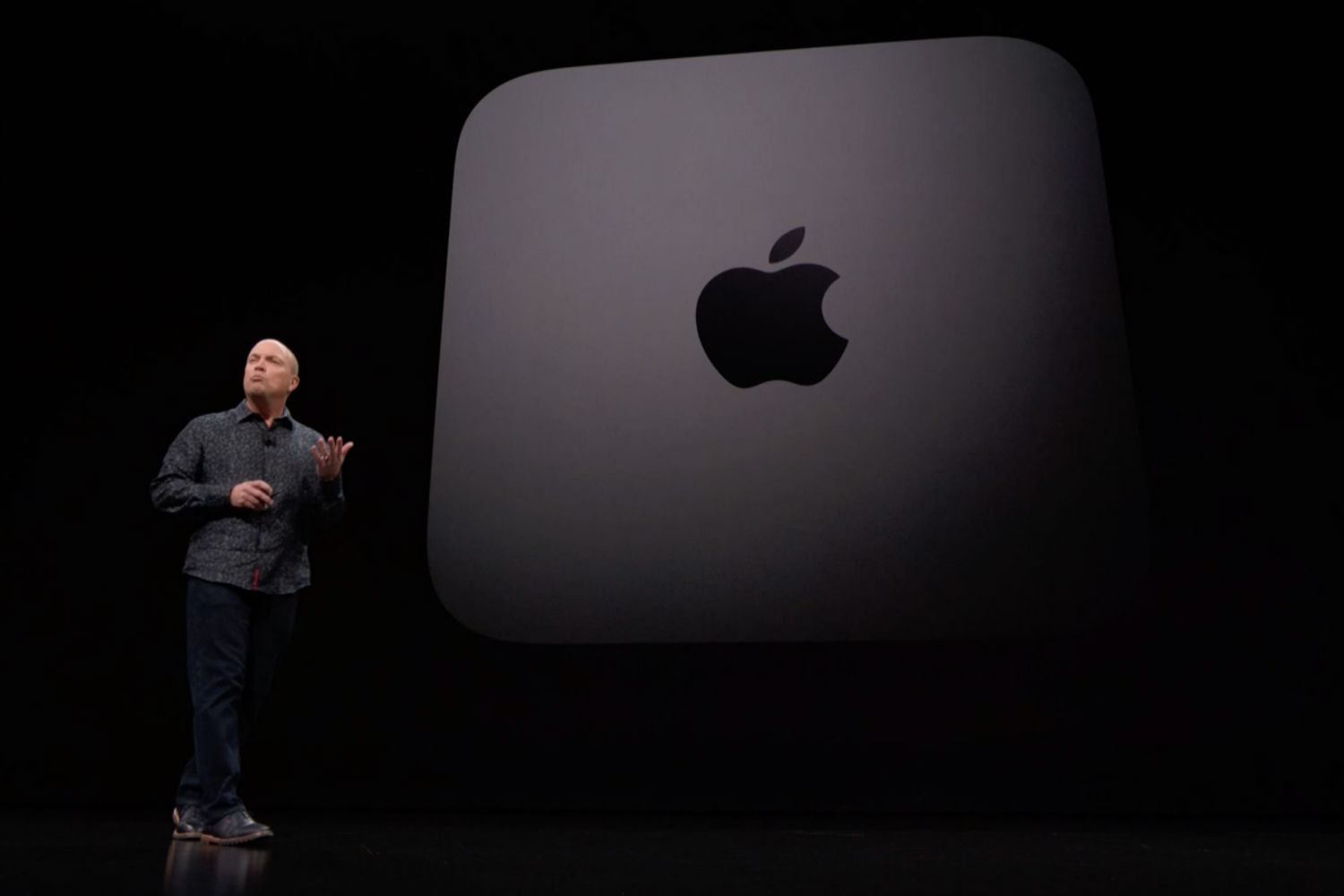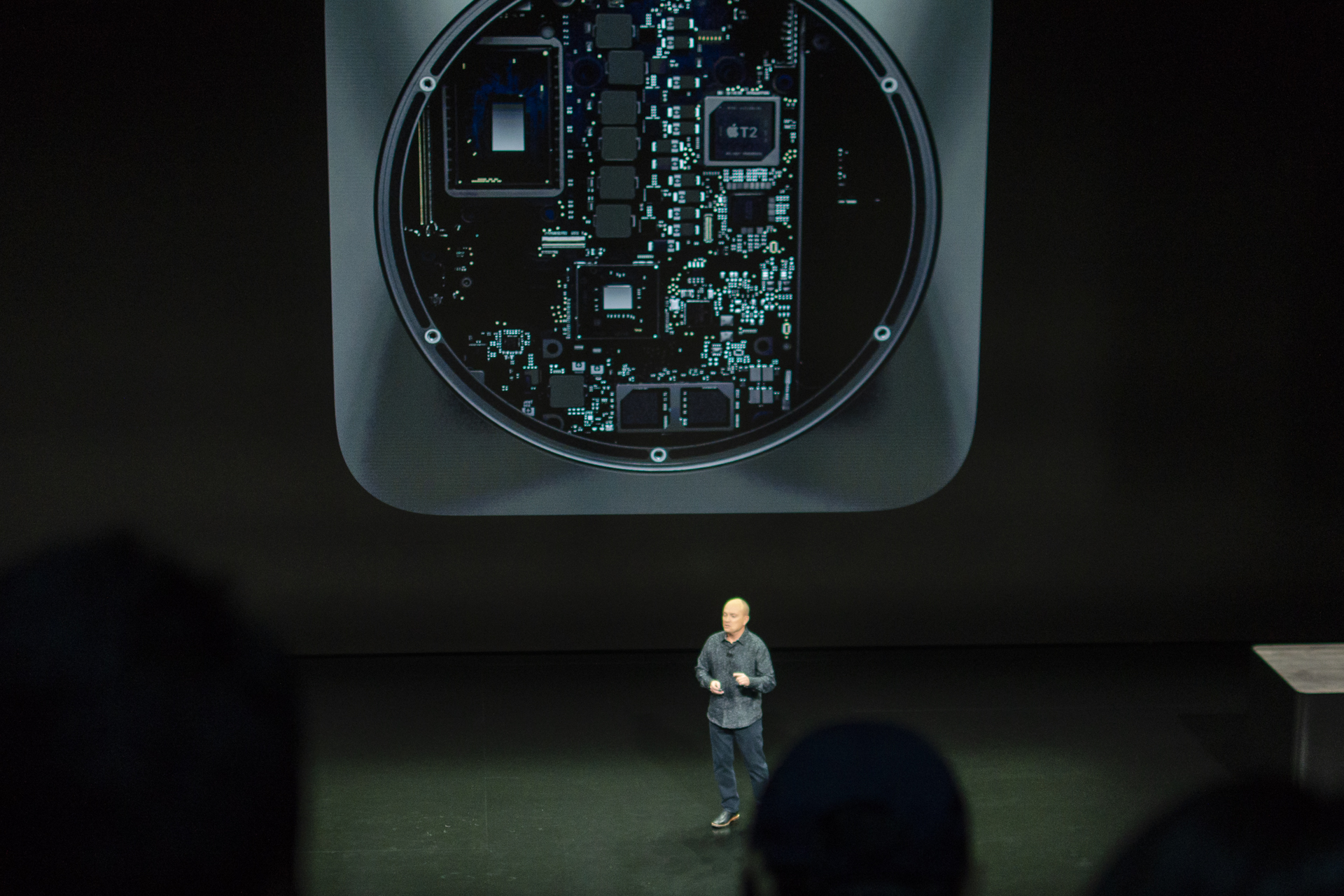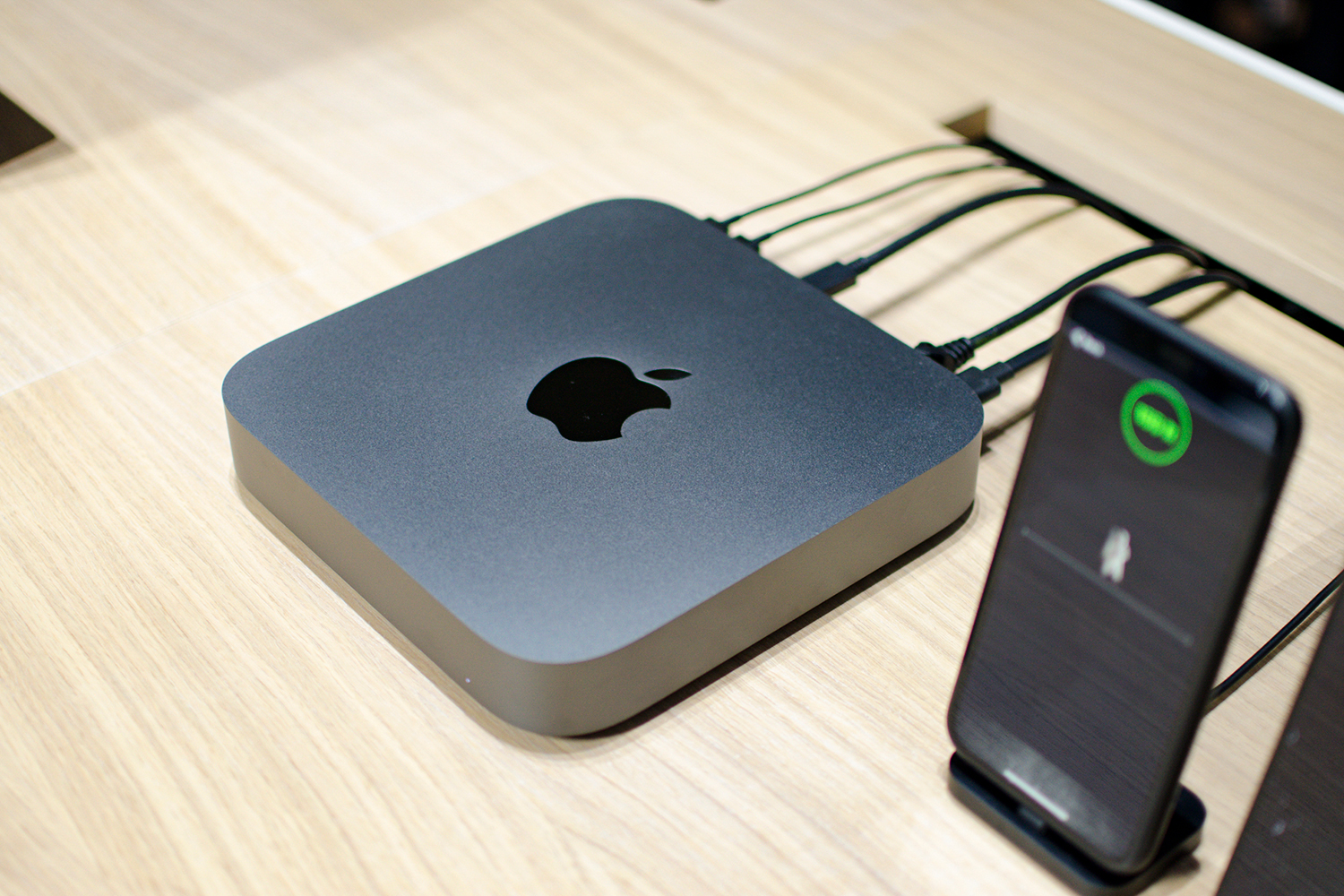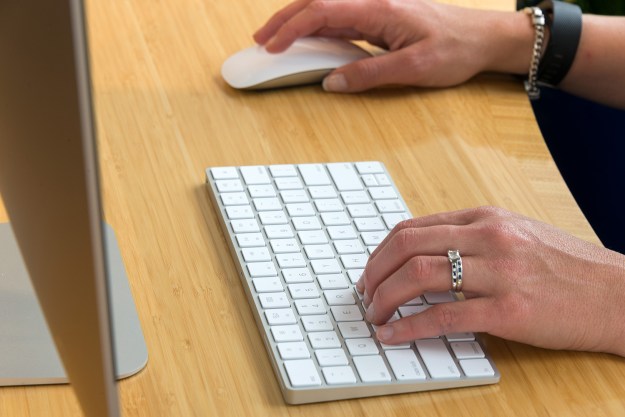
After more than four years of neglect, Apple has finally refreshed the Mac mini, giving it one of the biggest performance bumps the line has seen to date. The new Mac mini tops out with a six-core Intel 8th-gen processor, enhanced security thanks to the Apple T2 chipset, and upgradeable memory. Despite coming only in the same space grey hue as the prosumer-targeted iMac Pro, the Mac mini retains its consumer branding — there’s no “Pro” in the name, contrary to early rumors.
All this power, however, comes at a cost, and the latest model costs a pretty penny more than the older model that it replaces. With a starting price of $799, the Mac mini’s higher price this year is creeping into the iMac’s $1,100 territory, even though Apple’s compact desktop doesn’t ship with its own display. If you’re set on picking up a new Mac mini, here’s what you need to know heading into the configuration process.
Processor

Thankfully, after years of being saddled with an aging processor, the Mac mini comes with Intel’s 8th-gen processor. The entry-level Mac mini starts with a quad-core 3.6GHz Coffee Lake Core i3 processor, though you can opt for a more powerful 3.2GHz six-core Core i7 processor or go for the 3.0GHz six-core Core i5 model instead. The jump from quad-core to six-core processors will provide the most noticeable performance improvement, so if you’re looking for the best value, the Core i5 is a good choice.
None of the upgrades will give you the option to add a discrete graphics card, which isn’t surprising given the Mac mini’s compact 7.7 x 7.7 x 1.4-inch frame. Instead, you’ll have to rely on Intel’s UHD Graphics 630, though if you demand more graphics performance, you can connect the Blackmagic eGPU to any one of the four Thunderbolt 3 over USB-C ports on the rear of the device.
Storage

Apple did away with hard disk storage this year, and all Mac mini models now standardize on PCIe-based solid-state drives. Storage starts at 128GB for the base quad-core model or 256GB on the six-core configuration. On the six-core Core i5 model, upgrading from a 256GB drive to 2TB quickly bumps the $1,099 price to $1,899.
As a desktop, most users will want at least 256GB capacity. The SSD can only be configured at purchase, as it’s not an upgradeable component on this desktop. More frugal shoppers can choose a lower capacity SSD to save money and add an external SSD or hard drive later.
Memory

The Mac mini can be configured with up to 64GB of DDR4 RAM, making it a powerful desktop. Best of all, even if you opt to stick to the base 8GB of RAM at purchase, memory is easily upgradeable by removing a plastic cover on the bottom of the Mac mini. Configuring the Mac mini with 64GB of
To justify the cost, Apple claims that 64GB of memory will deliver up to nearly eight times the performance of a similarly configured system with 16GB of RAM. But even at 16GB, you’ll need to add another $200 to your base memory configuration. Make sure whatever processor you choose can actually use the amount of memory you add on. A Core i3 with 64GB of
The rest

All configurations ship with Gigabit Ethernet support, along with Wi-Fi 802.11ac (compatible with 802.11a/b/g/n) and Bluetooth 5.0 radios. Users demanding even faster connection speeds can upgrade to a 10Gb Ethernet port for an added $100. The Mac mini also comes with an HDMI 2.0 port, power port, two USB-A 3.0 ports, 3.5mm headphone jack, and four Thunderbolt 3 over USB-C ports, allowing prosumers the opportunity to connect up to a total of three displays (depending on resolution and refresh rate).
Although significantly more powerful this year, the Mac mini’s higher cost of entry — it starts at $799 — may put off the budget-conscious buyers who were previously drawn to this Mac line. The improved performance on this year’s model, along with its ability to pair with an eGPU, moves the Mac mini into a more premium territory. Fully upgraded, the Mac mini’s price quickly increases to $3,199 when configured with with a six-core 8th-generation Intel Core i7 processor, 64GB RAM, a 2TB SSD, and a 10Gb Ethernet port. However, keep in mind that you may still need to add a $99 Magic Keyboard, $79 Magic Mouse, and a display to the price if you don’t already have them.
In comparison, Apple’s iMac Pro comes with in at $4,999, but comes with a more powerful Xeon processor, ships with a keyboard and mouse, and has a built-in high resolution display in an all-in-one package. And when you have to add in the peripherals and a display, Apple’s standard $1,099 iMac may be the more affordable option for most consumers, if you don’t mind a 21.5-inch screen or a hard desk drive rather than an SSD for storage.
Editors' Recommendations
- Why Samsung’s answer to the MacBook Pro can’t quite compete
- The best MacBook to buy in 2024
- Apple did the unthinkable with the new M4 chip
- How to take a screenshot on a Mac
- Laptop buying guide: what to look for in 2024


